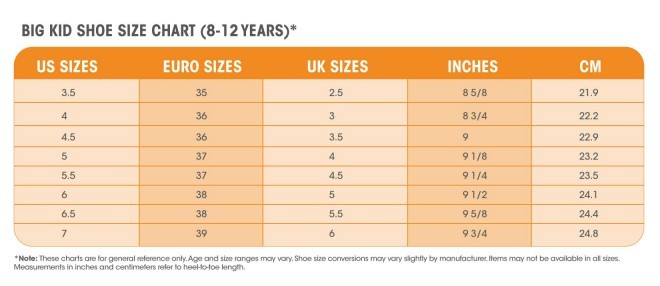Saving money without sacrificing style is a smart goal for any shopper. One clever way to stretch your budget and expand your footwear options is by exploring children’s shoe sizes. It might sound unusual, but converting your women’s shoe size to a comparable children’s size can unlock access to more affordable and sometimes even more desirable shoe styles. Are you curious how children’s shoe sizes compare to women’s? This guide will simplify the process, providing you with easy-to-use conversion methods and insights to confidently shop in the kids’ shoe department.
Why Venture into Children’s Shoe Sizes?
Shopping for kids’ shoes when you’re an adult woman might seem unconventional, but there are compelling reasons to consider it. Firstly, and perhaps most appealing, is the cost savings. Children’s footwear is often significantly less expensive than adult versions, even for similar styles and brands. This price difference can be substantial, allowing you to acquire the shoes you want without breaking the bank.
Beyond the financial advantage, exploring children’s sizes can also lead you to discover unique styles or find shoes that are sold out in women’s sizes. Popular brands and designs sometimes fly off the shelves in adult sizes but remain available in the children’s section. You might even find that you prefer certain children’s designs, which can be playful, practical, or simply a refreshing alternative to adult styles. It’s about expanding your choices and finding the perfect fit, both literally and figuratively.
The Simple Math: Converting Women’s to Children’s Shoe Size
The most straightforward method for converting women’s shoe sizes to youth or children’s sizes is a simple subtraction. The general rule of thumb is: subtract 2 sizes from your US women’s size to find your approximate children’s size.
Women’s US Shoe Size – 2 = Children’s Shoe Size
For example, if you typically wear a US women’s size 7, a children’s size 5 would likely be a good starting point. Similarly, a women’s size 9 often corresponds to a children’s size 7. This simple equation provides a quick and easy way to navigate children’s shoe sizing.
However, it’s important to remember that shoe sizes can vary slightly between brands and even styles. For a more precise conversion, especially if you find yourself on the cusp between sizes in women’s shoes, consulting a detailed shoe size chart is highly recommended.
Utilizing Shoe Size Charts for Precise Fit
While the “minus 2” rule is a helpful starting point, shoe size charts offer a more nuanced and accurate conversion. These charts take into account the subtle differences in sizing scales between women’s and children’s shoes.
As the original article mentions, if you often find yourself wavering between two women’s sizes, a shoe size chart becomes even more valuable. For instance, if you sometimes wear a women’s size 6 and sometimes a 6.5, a shoe size chart might indicate that a children’s size 4.5 would be the ideal fit, falling comfortably between those two women’s sizes.
These charts are readily available online, often provided by shoe retailers or shoe sizing guides. They typically list women’s US sizes alongside their corresponding children’s US sizes, and sometimes include European sizes for further clarity. Using a chart ensures you consider any subtle discrepancies and choose the children’s size that most closely aligns with your women’s size. You can usually find comprehensive shoe size guides on websites that specialize in footwear, like the shoe sizing guide mentioned in the original article, which can offer additional insights and measuring tips.
Key Considerations for Converting Shoe Sizes
While converting shoe sizes opens up new shopping avenues, keep these crucial points in mind:
- Width: Children’s shoes are generally designed for narrower feet than women’s shoes. If you have wider feet, children’s sizes might feel too snug. Pay attention to shoe width if it’s a concern.
- Style and Design: Children’s shoe designs might sometimes feature more playful or youthful elements than adult styles. Ensure the style is suitable for your preferences.
- Brand Consistency: Sizing can vary slightly between brands. If you are familiar with a particular brand, try to stick to it when converting sizes for more predictable results.
- Trying On is Best: Whenever possible, try on children’s shoes before purchasing them, just as you would with women’s shoes. This ensures the best and most comfortable fit.
Step into Savings and Style!
Unlocking the secret of children’s shoe sizes compared to women’s sizes is a smart move for savvy shoppers. By understanding the conversion process, utilizing size charts, and keeping key considerations in mind, you can confidently explore the kids’ shoe department. Get ready to discover fantastic deals, unique styles, and a whole new world of footwear possibilities. So, why not put your newfound knowledge to good use? Start browsing kids’ shoes today and enjoy the benefits of smart and stylish shoe shopping!
